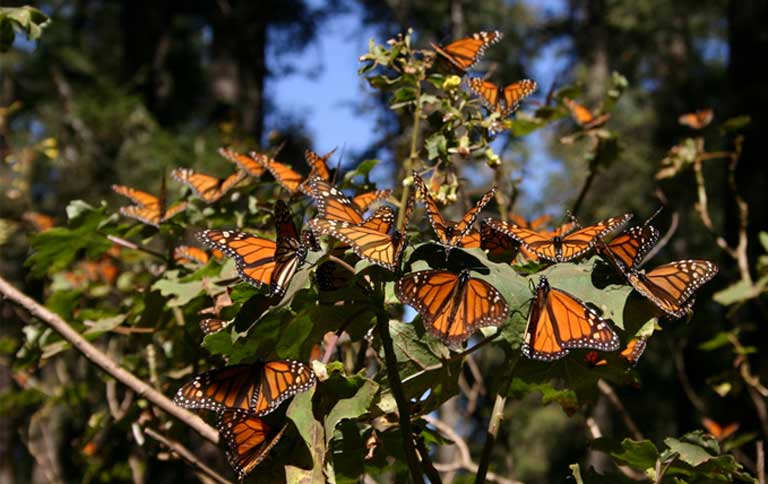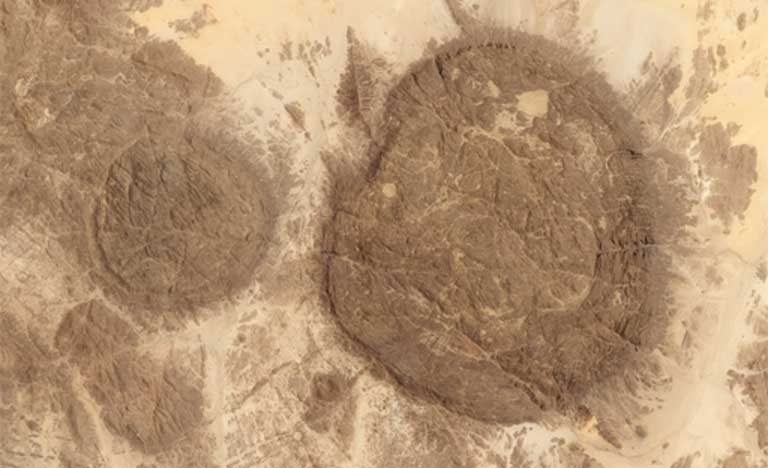- From the Great Barrier Reef to the Galapagos Islands and the forests of central Africa, over a third of Natural World Heritage Sites designated by UNESCO are under threat from myriad problems.
- Of the seventeen locations with a critical conservation outlook, sixteen are in the Tropics, and the majority of those are in Africa. Less than half of African World Heritage sites received a “good” outlook. Lack of funding in developing nations is a major problem.
- Sites harboring rich biodiversity, such as Virunga and Garamba national parks in the Democratic Republic of Congo, and the Rio Platano Biosphere Reserve in Honduras, are especially at risk.
- The most common threats to Natural World Heritage Sites are invasive non-native species, unsustainable tourism, poaching, hydroelectric dams, and logging, with climate change the fastest growing threat.

More than a third of United Nations World Heritages sites with natural Outstanding Universal Value are under threat, according to a recent report by the IUCN, the International Union for Conservation of Nature. The first assessment of all 241 natural World Heritage sites globally found that 29 percent are of “significant conservation concern,” while a further 7 percent are worse off, with “critical concerns.”
Famous heritage sites evaluated to be at risk include Indonesia’s Komodo National Park, Ecuador’s Galapagos Islands, Australia’s Great Barrier Reef, and Peru’s Machu Picchu. The report found tropical sites to be among the most critically threatened, especially in Africa, where developing nations often lack the funds to properly protect the preserves.
World Heritage Sites are chosen by UNESCO, the United Nations Educational, Scientific and Cultural Organization for having exceptional cultural, historical, scientific or other significance, and the sites are legally protected by international treaties. Of these, 241 sites were selected for their natural outstanding universal value, covering 293 million hectares of land and sea across 107 countries. The United States under Donald Trump withdrew from UNESCO this year, after not paying its UNESCO dues since 2011, a total of more than $550 million in arrears payments.
“Natural World Heritage sites are granted unique international recognition and should be models of conservation,” says Peter Shadie, Senior Adviser for the IUCN’s World Heritage Programme and co-author of the report. But not all sites have achieved the same level of conservation protection.
The IUCN World Heritage Outlook 2 report, released at the World Parks Congress in Sydney in November, found that while over half of sites are well managed, 13 percent have serious deficiencies in their strategy for protecting species and landscapes.
“The overall future is not good,” says Shadie, “certainly not good enough for the world’s best natural places.”

Sites given World Heritage status due to their valuable biodiversity are more threatened than those cited for geology or natural beauty. The most common biodiversity threats are invasive non-native species, unsustainable tourism, poaching, hydroelectric dams, and logging, with climate change the fastest growing threat to Natural World Heritage sites.
Of the seventeen locations with a critical conservation outlook, sixteen are in the tropics, and the majority in Africa. Africa’s Natural Heritage sites cover a total of 41 million hectares (158,000 square miles), but only 43 percent have a good outlook.
For instance, Africa’s largest protected area – Aïr and Ténéré National Reserves – covers over 7.5 million hectares (29,000 square miles) in Niger, including the unusual volcanic structures of the Aïr mountains and the Sahara Desert landscape of Ténéré. Decades of civil unrest in Niger, coupled with limited management capacity, has left the wildlife of this heritage site severely threatened by poaching and illegal logging.
The Democratic Republic of Congo, a country ravaged by years of war and civil unrest, is home to five of the most threatened world heritage sites: Salonga National Park, Kahuzi-Biega National Park, Garamba National Park, Okapi Wildlife Reserve, and Virunga National Park, which is home to half of the World’s remaining populations of the Critically Endangered Mountain gorilla (Gorilla beringei beringei). Garamba National Park has seen devastating wildlife declines in recent years, losing its remaining population of Northern White Rhinos (Ceratotherium simum cottoni) in the early 21st Century, as well as 95 percent of its elephants and over 80 percent of other large mammals by 2016.

Lake Turkana in Kenya, Africa’s most saline lake, is also at risk. The largest desert lake in the world, Lake Turkana is an important stopover for migrating birds. It is also home to the Koobi Fora fossil deposits, yielding hominin species fossils dating back four million years. However, the lake reserve is severely threatened by dams being developed on its inflowing rivers, and by sugarcane plantation expansion.
Outside Africa, tropical sites of critical concern are clustered in Central America, Southeast Asia and Oceania. The Rio Platano Biosphere Reserve in Honduras, which preserves both rich flora and fauna, and the traditional ways of life for 2000 indigenous people, received a critical conservation outlook designation in the 2017 report. It is one of the largest and most important forest blocks in Mesoamerica, but an inadequate government presence there has allowed illegal logging, poaching and drug trafficking to prosper.
Further north, the Monarch Butterfly Biosphere Reserve hosts one of the most spectacular phenomenon in the animal kingdom. Each autumn Monarch Butterflies (Danaus plexippus) congregate in their millions in the mountain forests of central Mexico, where they over-winter before flying back to eastern Canada the following spring. This famous spectacle is under threat from industrial agriculture and land development, causing declines in the preferred food plants of the Monarchs.

“The familiarity and charisma of monarch butterflies serves to support all pollinators who use the same habitat and contribute to ecological services, like pollination,” says Wendy Caldwell, Program Coordinator at the Monarch Joint Venture at the University of Minnesota in the USA.
But for this highly migratory species, many threats occur outside the site’s World Heritage protection. “It is the extensive loss of habitat throughout their range that is the main driver for monarch population declines,” says Caldwell. Protecting their feeding grounds across North America and Canada will be crucial to saving this flagship species.
The Indonesian tropical rainforests of Sumatra also made the critical list, encompassing three national parks – Gunung Leuser National Park, Kerinci Seblat National Park and Bukit Barisan Selatan National Park – which cover 2.5 million hectares (9,650 square miles) and include many endemic species such as the Sumatran orangutan (Pongo abelii), and the newly discovered Tapanuli orangutan (Pongo tapanuliensis).
However, the new report is not all doom and gloom. There are some success stories. Of the 228 sites included in the IUCN’s last assessment, in 2014, fourteen have improved their rating, and two have moved off the critical list. Political instability in Côte d’Ivoire, for example, prevented Comoé National Park staff from carrying out key conservation work, but stabilization since 2012 has allowed rangers to regain control of the preserve, where populations of chimpanzees and elephants have started to recover.

On the good outlook list too is Gunung Mulu National Park in Malaysia, and the Lakes of Ounianga in Chad, the only site to improve to good status since 2014. This year’s report cites local community participation in the management of the lakes as a key to the site’s good outlook. Similarly, strict management coupled with a 5-year development plan and a fruitful ecotourism industry, has helped Mulu National Park achieve good status for its 3,500 resident plant species.
Replicating the successful strategies of World Heritage Sites like these may help improve the outlook of over 200 sites of concern. “We need to scale up and echo these solutions elsewhere,” concludes Shadie. Poor management and a lack of law enforcement and government involvement are frequently listed as key threats – all challenging problems to remedy in developing nations.
“It is our collective duty to secure the highest level of protection to these exceptional places,” Shadie says.
FEEDBACK: Use this form to send a message to the author of this post. If you want to post a public comment, you can do that at the bottom of the page.
